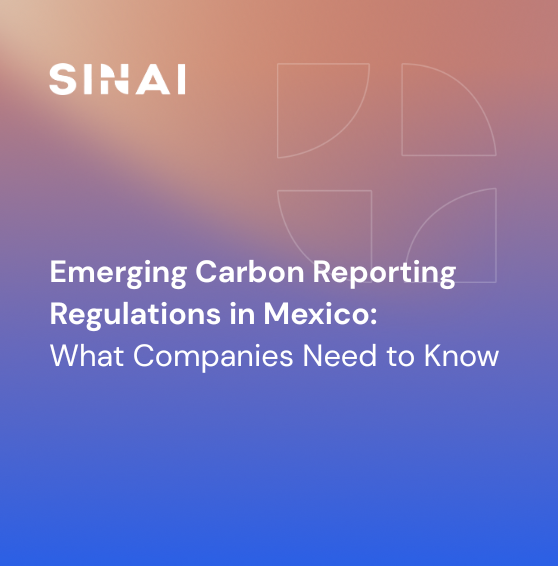
Deep Decarbonization: What, How, and Why
Do we have all of the technology we will need to successfully reach the deep decarbonization ambitions by 2050?
In a number of sectors, zero-carbon options are ready, available, and are at or near enough the cost of the alternative carbon-emitting sources. There are clear, although challenging, pathways to net-zero CO2 emissions in the power sector using a combination of renewable energy, energy storage, and carbon sequestration.
In more challenging sectors like steel and cement manufacturing, technology options exist but require robust policy action to reduce the cost and increase scale.
To be successful, the deployment of these technologies must be paired with demand management and process changes which need to include moving to a circular economy in manufacturing. Supply chain decarbonization remains one of the most pressing opportunities needing to be championed by corporations.
Gain a clearer understanding of the what, how, and why of deep decarbonization, including the transition risks that make it necessary to prioritize decarbonizing your firm in 2021.
Defining deep decarbonization
The phrase ‘deep decarbonization’ refers to the gradual elimination of carbon-emitting fuels, favoring more sustainable alternatives. In other words, deep decarbonization is more than just a quick, short-term fix to combat the climate crisis. It’s a long-term, proactive strategy offering us a longer lease on the planet.
A common consensus has emerged when it comes to the best approach to deep decarbonization: one that aims to decrease the amount of carbon released sector-by-sector, including but not limited to energy, utilities, transportation, construction, and consumer goods.
The deep decarbonization pathways project
The Deep Decarbonization Pathways (DDP) Project brings together energy experts and researchers from around the world, working in collaboration to share practical solutions for reducing greenhouse gas (GHG) emissions in order to stay below a 2°C increase limit before 2050.
Research teams from the 16 biggest GHG-emitting countries, including Brazil, China, Germany, Japan, and the USA, participate in the project. It’s no surprise that the energy sector is one of the worst offenders when it comes to emitting carbon into the atmosphere. The industry is responsible for 72% of global emissions. For this reason, the energy sector has had a spotlight on it when it comes to deep decarbonization.
Legal pathways to deep decarbonization in the United States
In 2019, the DPP published ‘Legal Pathways,’ which is based on two reports by the project that set out policy and technical approaches to reducing United States GHG emissions by at least 80% by 2050 from their 1990 levels. This 80/50 target and similar carbon abatement goals are commonly referred to as deep decarbonization, as they require systemic changes to the US energy economy. In other words, the report explains how U.S. law needs to change in order to provide a pathway to an 80% reduction of GHG emissions by 2050.
The group suggests that in order to stay on a pathway where emissions reductions continue, we must move away from a pathway that heavily relies on natural gas as though it emits less carbon than coal, it is still a fossil fuel with harmful emissions.
The three pillars of deep decarbonization, as defined by the DPP, are:
- Energy Efficiency
- Decarbonization of electricity
- End-of-fuel-use switching to electric-powered sources
Further recommendations by the DPP include:
- Doubling of the electricity supply to allow for increased electrification (for example, transitioning from gasoline-powered vehicles to electric cars). The electricity supply needs to be generated by clean energy.
- Move away from liquid fuels and elimination of reliance on coal.
- New energy supplies should come from mostly wind, solar, and hydropower.
- Storage needs to be an essential part of decarbonization.
Transition risk and deep decarbonization
Several sectors are exposed to transition risk when it comes to deep decarbonization. If not adequately mitigated, a haphazard transition could have a massive impact on your firm’s financial stability.
Banks and financial institutions need to forecast a thorough strategy for the transition along with their counterparts and acquire the right tools for the necessary risk assessments.
Going from 'business as usual' to a net-zero pathway
Sinai can ensure your firm’s journey to decarbonization is as smooth as possible, with asset optimization and carbon performance management all in one place.
Our software solution allows your firm to not only compile emissions inventories and sustainability reports but also take advantage of our dynamic scenario assessment tools, caron pricing modules, and a Marginal Abatement Cost Curve. These next-generation tools are essential for firms wanting to take the lead when it comes to tackling deep decarbonization.
Whether your firm operates in the utilities, transportation, industrials, real estate, or consumer goods industries, SINAI’s sector-specific expertise can help you on your path to net-zero with ease. Reach out for a demo of our software and see what our platform can do for your business.

-2.png)
%20(7).png)








